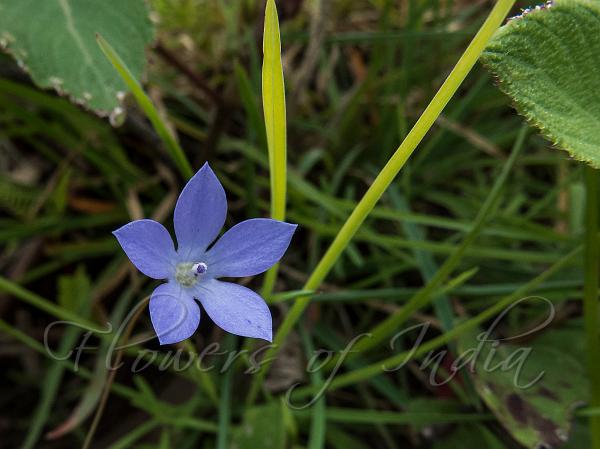|
| Asiatic Bellflower |
|

|

| File size | 767115 |
| Original date | 7/28/14 2:05 AM |
| Resolution | 2048 x 1536 |
| Flash | Flash did not fire, auto |
| Focal length | 4.3mm |
| Exposure time | 1/400s |
| Aperture | 4.0 |
| Focus Distance | |
| Metering Mode | Multi-segment |
| Camera make | Canon |
| Camera model | Canon PowerShot SX50 HS |
| Sensor type | OneChipColorArea |
|
|
|
|
Photo: |
Botanical name: Wahlenbergia marginata Family: Campanulaceae (Bell flower family)
Synonyms: Campanula agrestis, Campanula indica, Campanula marginata
Synonyms: Campanula agrestis, Campanula indica, Campanula marginata
Asiatic Bellflower is a perennial herb with blue
bell-shaped flowers. Roots are elongated, carrot-like. Stems are erect
or ascending, 10-40 cm, branched at base, hairless or sparsely hairy
below. Leaves are alternate, mostly on lower part of stem, lowermost
sometimes caducous, stalkless or with stalk up to 7 mm. Leaves are
spoon-shaped, inverted-lanceshaped, elliptic, or linear, 1-4 cm × 2-8
mm, hairless or sparsely hairy, margin sinuate, sparsely toothed or
entire. Flower-stalks are erect, terminal and sometimes axillary,
slender, up to 20 cm. Hypanthium is obovoid or conic, glabrous. Sepals
are triangular or subulate. Flowers are blue, broadly bell-shaped, 3-12
mm, lobed to 1/3-2/3 the length. Petals are obovate, oblong, or
narrowly oblong. Capsule is obconic, obovoid, or subglobose, 3-8 mm.
Seeds are yellow-brown or dark brown, oblong or ellipsoid, slightly
compressed, 0.3-0.5 mm, smooth. Asiatic Bellflower is found in
subtropical Himalayas at altitudes of 600-1400 m, Western Ghats, east to
China and S. Japan, Malaysia, Australia, New Zealand, at altitudes of
600-1400 m. Flowering: February-May.
| Identification credit: Satish Phadke, N.S. Dungriyal | Photographed at Kodaikanal, TN & Ratanwadi, Maharashtra. |
• Is this flower misidentified? If yes,